The National Restoration and Museum Storage Centre (OMRRK) was built within the framework of the Liget Budapest Project. Standing on Szabolcs Street near City Park the 37-thousand square metre building houses storerooms, the Research Institute for the History of Central European Art, research rooms, restoration studios and a visitors' centre.
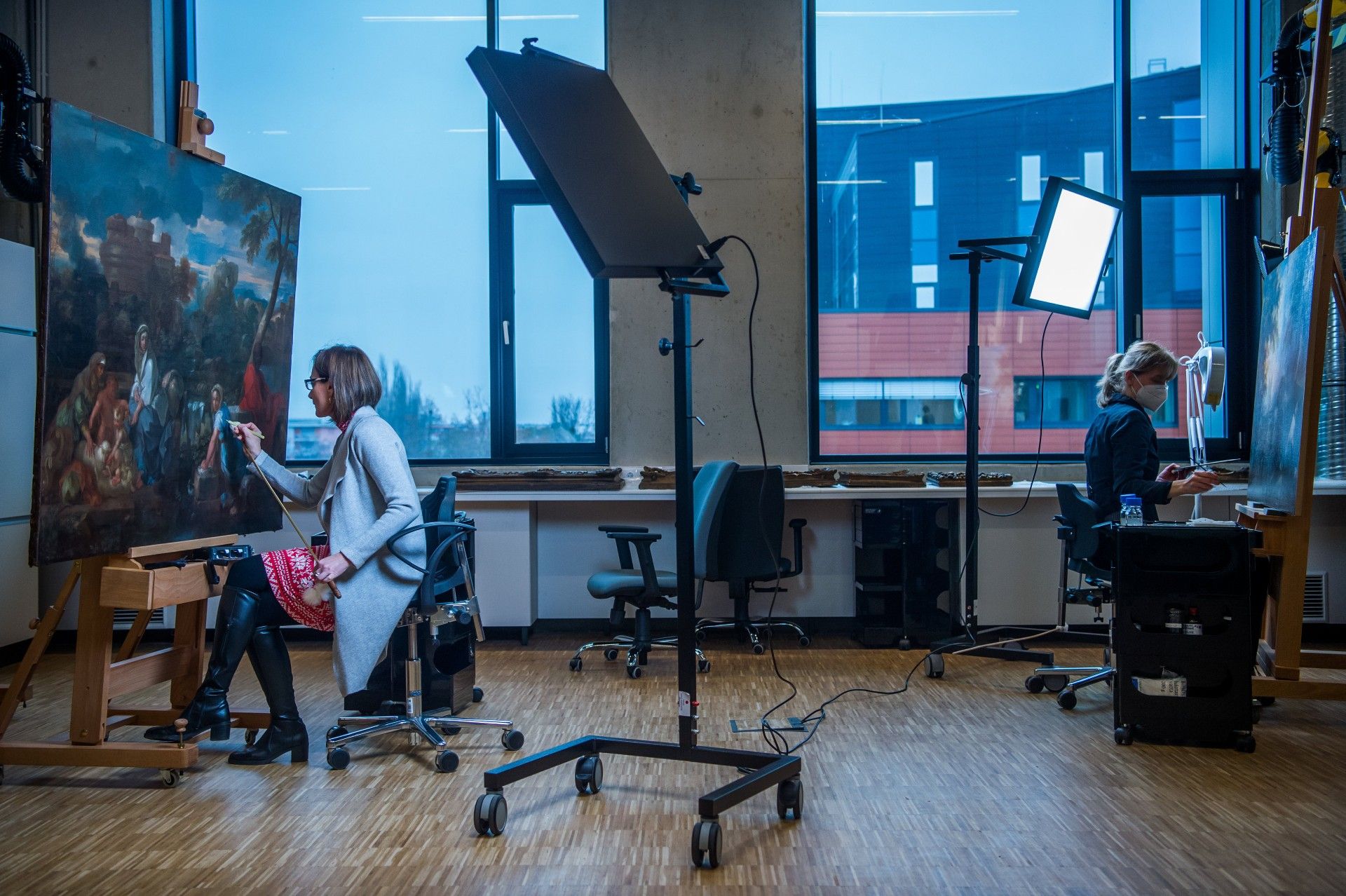
The National Restoration and Museum Storage Centre is now in use (Photo: MTI/Zoltán Balogh)
The nearly 30,000-square-meter main building provides the infrastructure for the preservation and scientific examination of more than three hundred thousand works of art and artefacts from the Ethnographic Museum, the Museum of Fine Arts and the Hungarian National Gallery. László Baán said that the project is a long-term, reassuring solution to the problems that these public collections have faced for many decades.
"The largest facility in the OMRRK complex, which is a background institution for the museums in City Park, and those moving there, is the main building, which houses the museum warehouses and restoration workshops. It provides a professional work environment on four subterranean floors and three above-ground" said Benedek Gyorgyevics, CEO of Városliget Zrt., the company commissioned for the implementation of the Liget Budapest Project. The workshops, offices, studios and laboratories in the building provide the best possible scientific and technical tools for the museum professionals working within their walls.
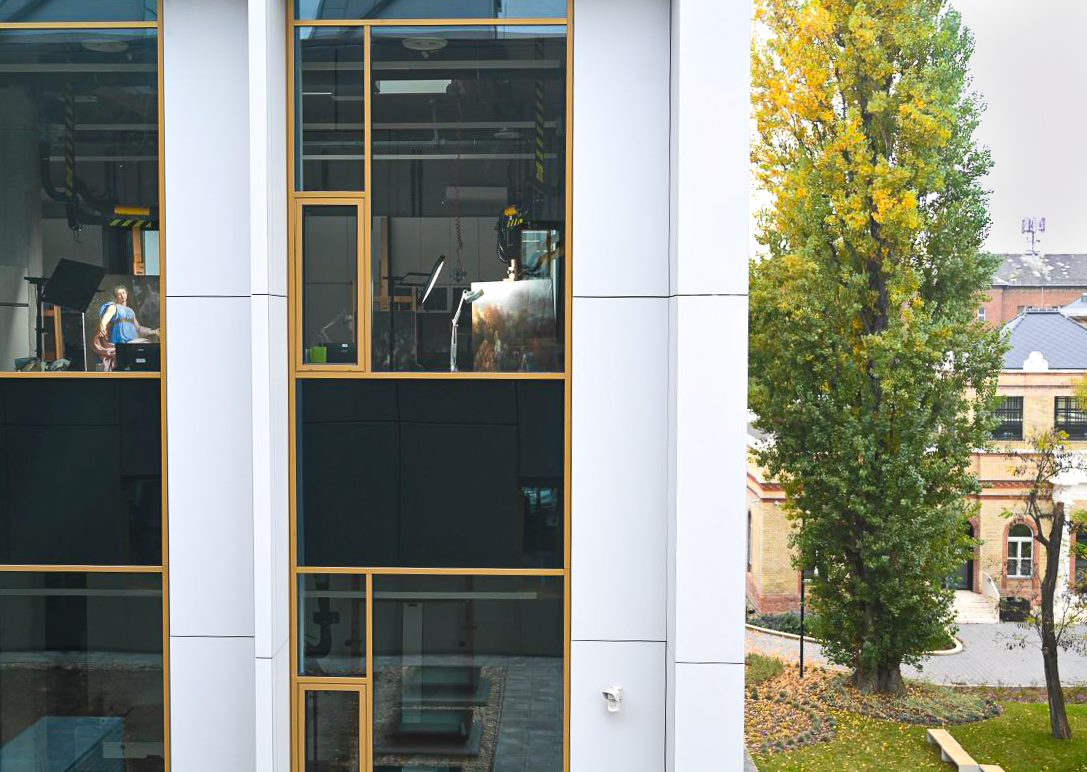
The workshops, offices, studios and laboratories provide all the tools needed for professional work (Photo: Városliget Zrt.)
The building that once served as the Jewish hall of worship in the old hospital, but was later transformed into an admissions area has been renovated as a visitor centre that covers over a thousand square meters. Among others, a conference room has been created in the building while considering monument protection.
The building complex, created within the renovated buildings which were once the Bródy Adél Hospital, also houses the Research Institute for the History of Central European Art on over 3000 square metres. The institute is responsible for one million documents from the Hungarian National Gallery and the Museum of Fine Arts.
The 13.000-square-metre Bókay Garden was also created within the complex, which is unique according to European standards.
The Museum of Fine Arts and Hungarian National Gallery in the OMRRK
The National Restoration and Museum Storage Centre (OMRRK) is currently moving more than a hundred thousand items from the collections of the Museum of Fine Arts and the Hungarian National Gallery to the new building. The restorers of the two collections are already working in new workshops.
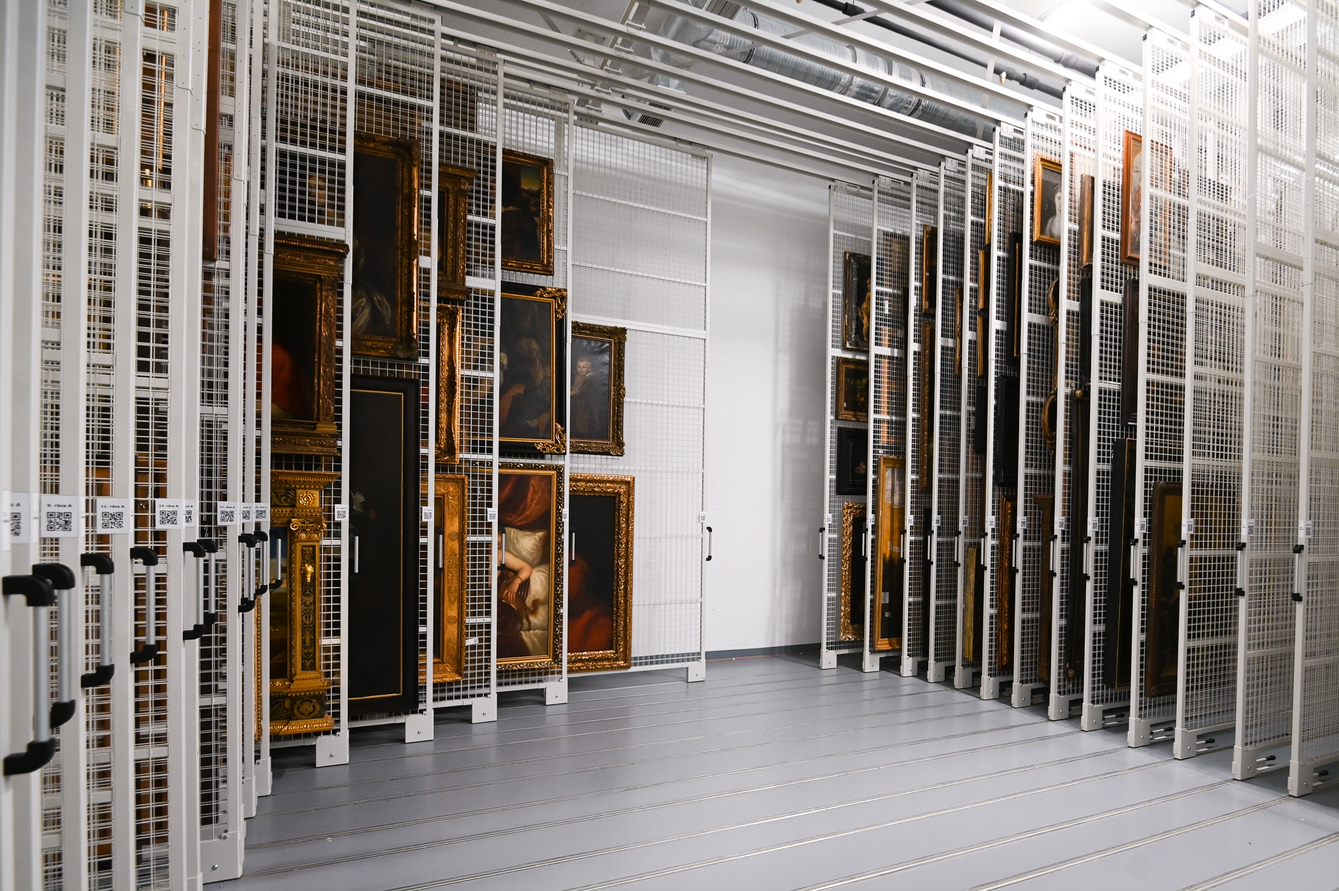
(Photo: Városliget Zrt.)
The paintings of Mihály Munkácsy, Béla Czóbel, and Pál Szinyei Merse, as well as Károly Markó and János Vaszary, are currently being restored in the nearly 300-square-meter, high-quality restoration studio. Restores work with state-of-the-art technologies in seven other studios in the OMRRK and four rooms designed for diagnostic and conservation tasks.
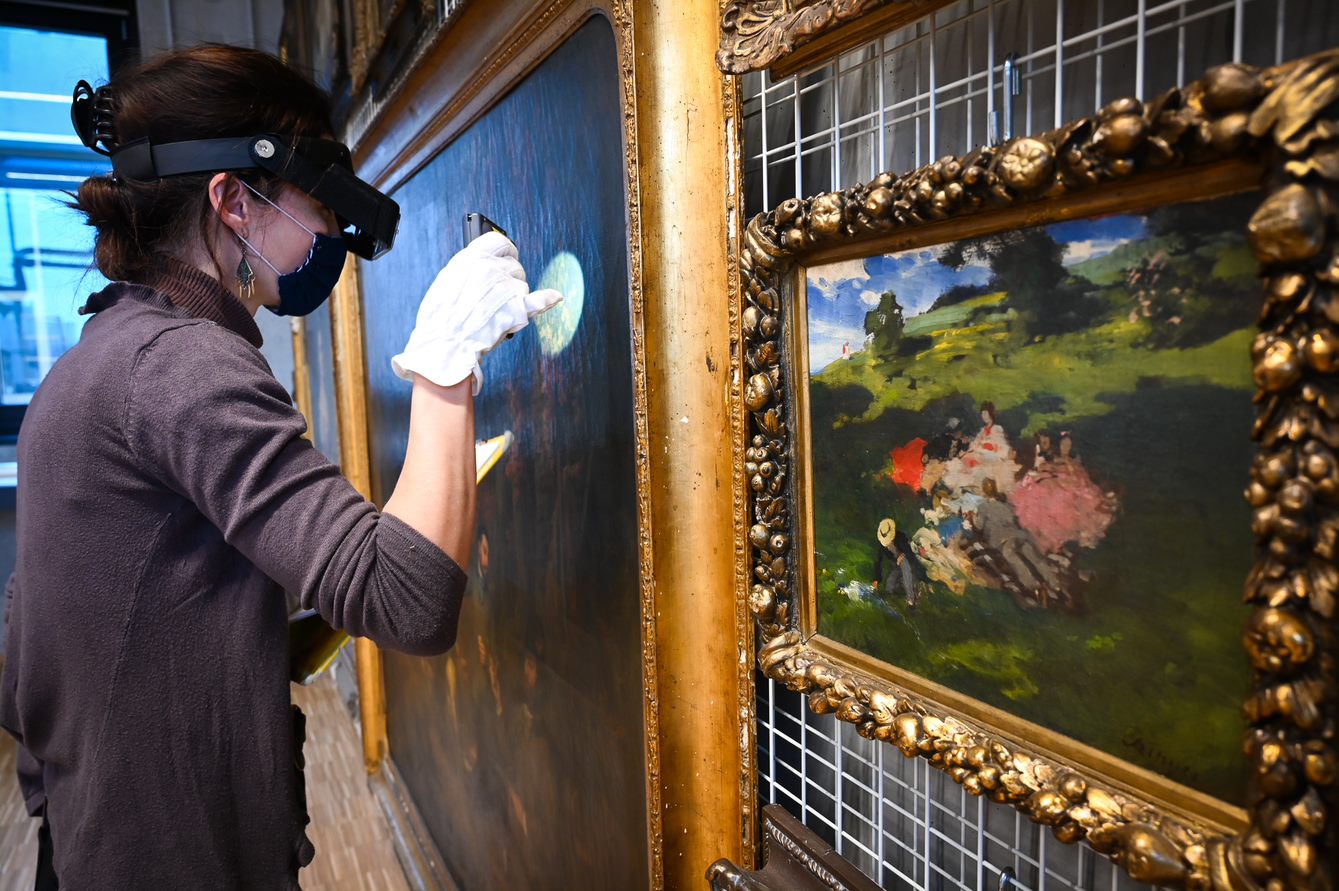
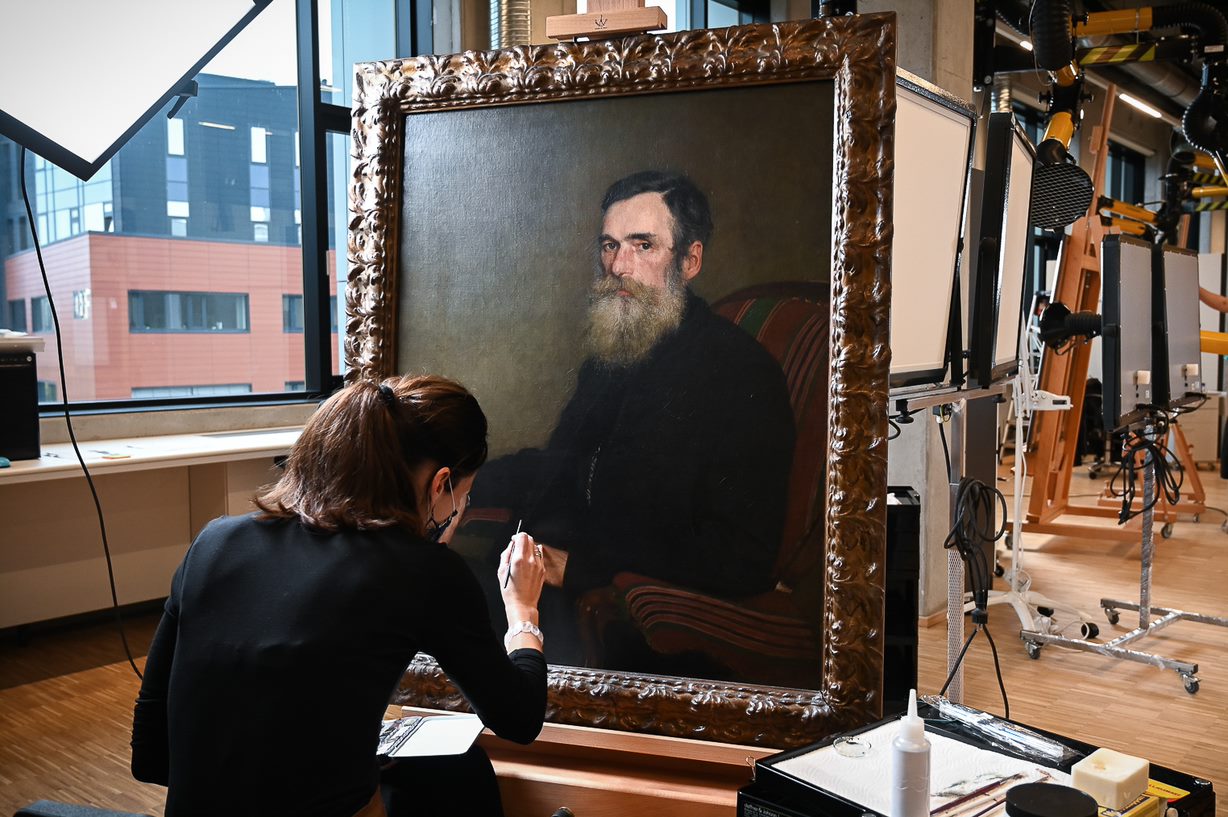
The restoration of paintings by Mihály Munkácsy, Béla Czóbel and Pál Szinyei Merse, as well as Károly Markó and János Vaszary is underway in the studios (Photo: Városliget Zrt.)
The facilities of the new building are unique in Hungary in terms of preservation and create the conditions required for the long-term storage and research of works of art or artefacts. The mechanical design of the building allows restorers to set temperatures and humidity individually in the studios and warehouses to preserve the collections.
The Ethnographic Museum in the OMRRK
The new building also houses the collection of the Ethnographic Museum. The national ethnographic collection will be moved into 28 warehouses to provide security and ensure longevity.
“The Ethnographic Museum is moving into a purpose-built building for the first time in its 150-year history handles a collection of over two hundred thousand items. The world-class storage systems have been designed and manufactured to ensure the ideal use of space while maximising the regard for safety standards and the protection of artefacts. The staff of the Ethnographic Museum examined the entire collection with dedication, and as a result, were able to design 'customised' storage systems uniquely adapted to the collections and even certain artefact groups,”
said Lajos Kemecsi, Director of the Ethnographic Museum.
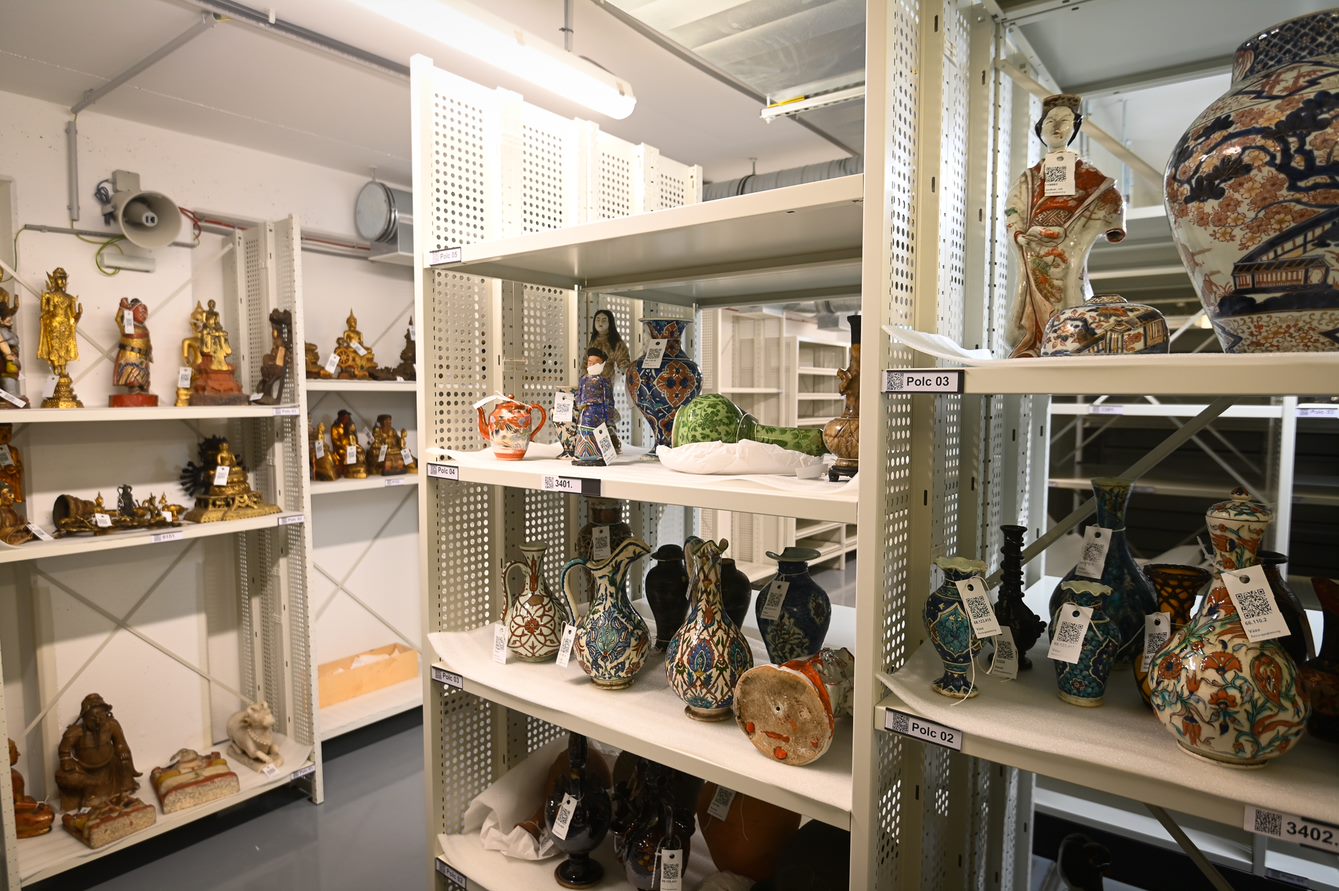
The collection of the Ethnographic Museum is also being moved to the new building (Photo: Városliget Zrt.)
In addition to the warehouses, the Ethnographic Museum Collection Centre also has world-class restoration workshops and a fleet of tools for preventive care and artefact protection. The different properties of the various materials in the collection – such as metal, wood, paper, textiles – necessitated the creation of separate, specialised restoration workshops.
The project aimed to achieve a symbiosis between the old and new buildings, through plans drawn up by the Ybl-Prize-winning architect, Zsolt Vasáros and the Narmer Planning Studio. The two valuable buildings on the site, designed by Vilmos Freund, were renovated in line with the standards set out for the protection of historical monuments. The structure and materials of the new building fit into the 19th-century surroundings of the smaller pavilion-like buildings of the hospital. Its simple construction and classic proportions are meant to evoke the character of timelessness and stability.
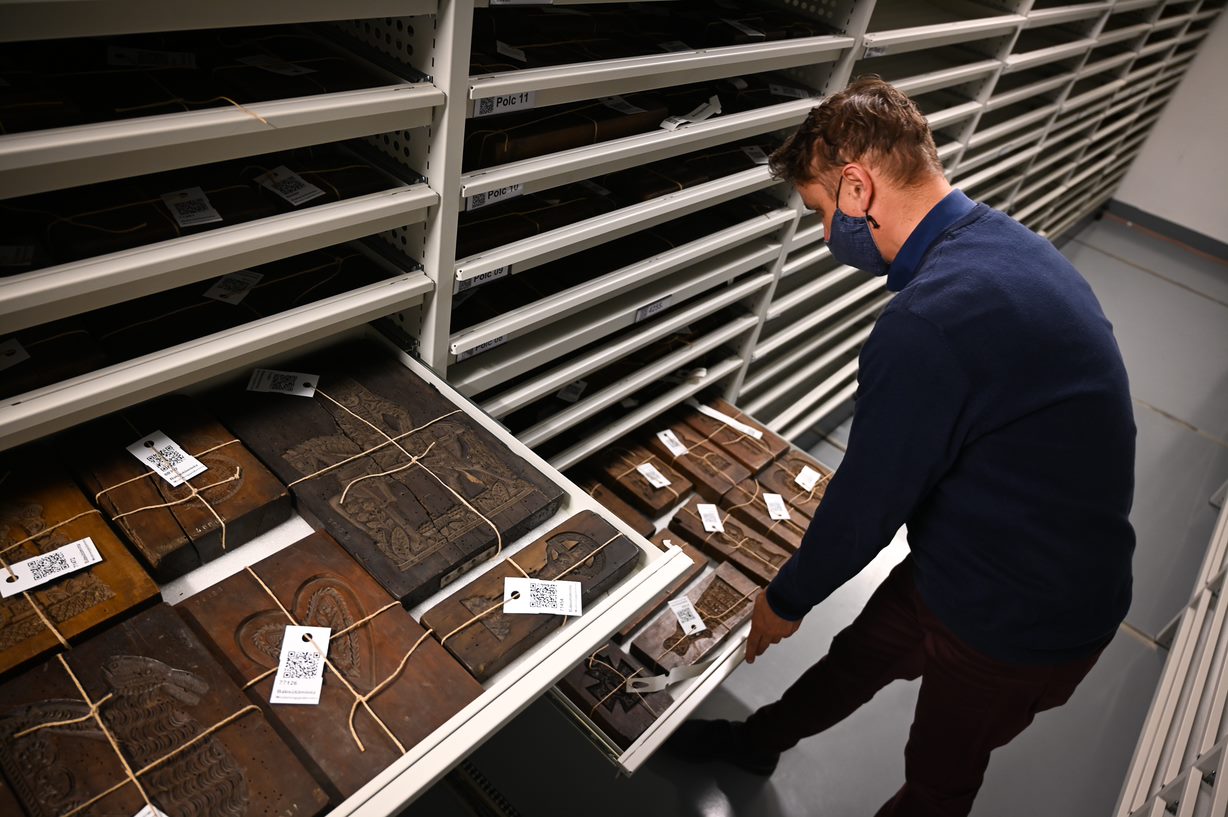
The national ethnographic collection will be moved into 28 warehouses with controlled environments (Photo: Városliget Zrt.)
Design architect Zsolt Vasáros said:
“The design task was made unique and difficult by the need to create an architectural programme for a comprehensive museum complex that essentially had no precedent in Hungary. The architectural solution also had to respect the existing buildings and the prestige of the institution the buildings would house. Nearly one hundred and fifty designers, creators, engineers and experts took part in the design process. The cooperation of those involved in building engineering and electricity, and restoration should especially be noted."
A spectacular video of the building is available here.
Source: Városliget Zrt.
Cover photo: The National Restoration and Museum Storage Centre (Photo: Városliget Zrt.)

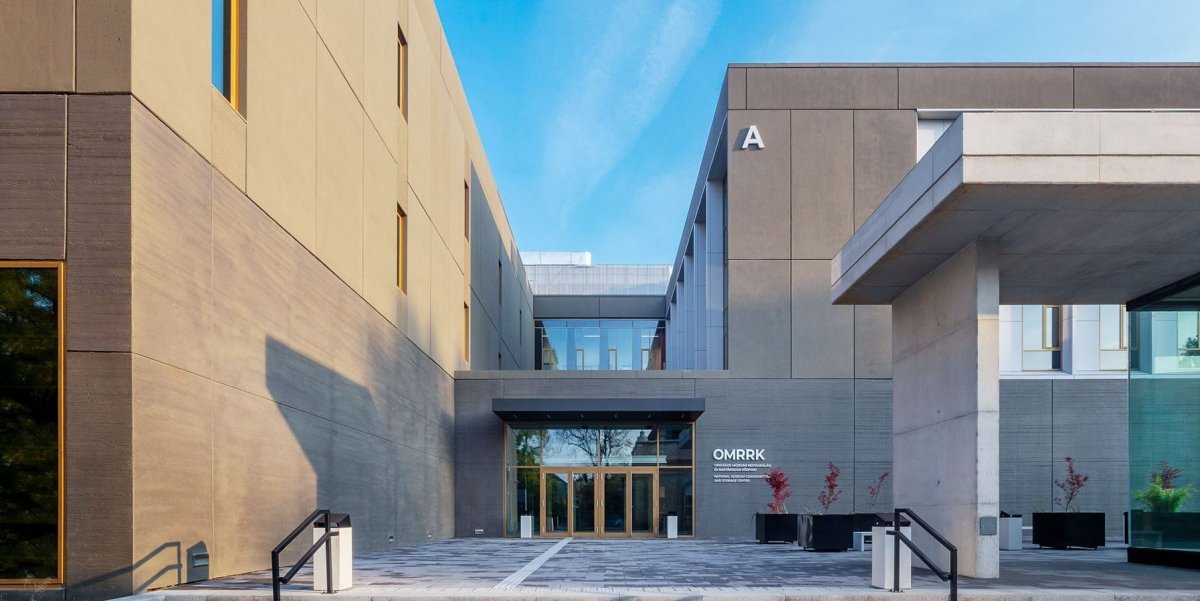




































Hozzászólások
Log in or register to comment!
Login Registration